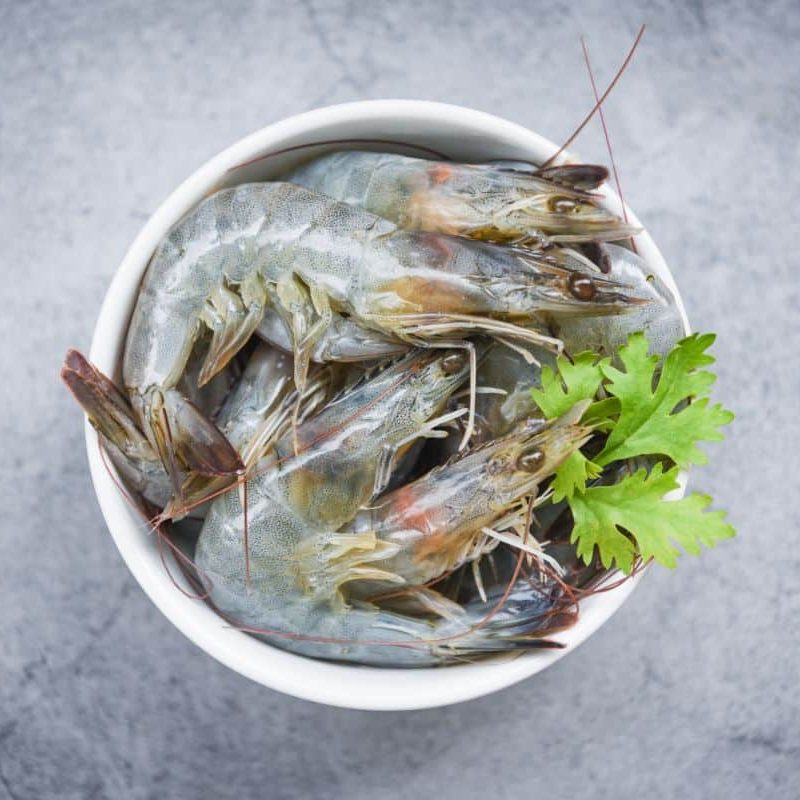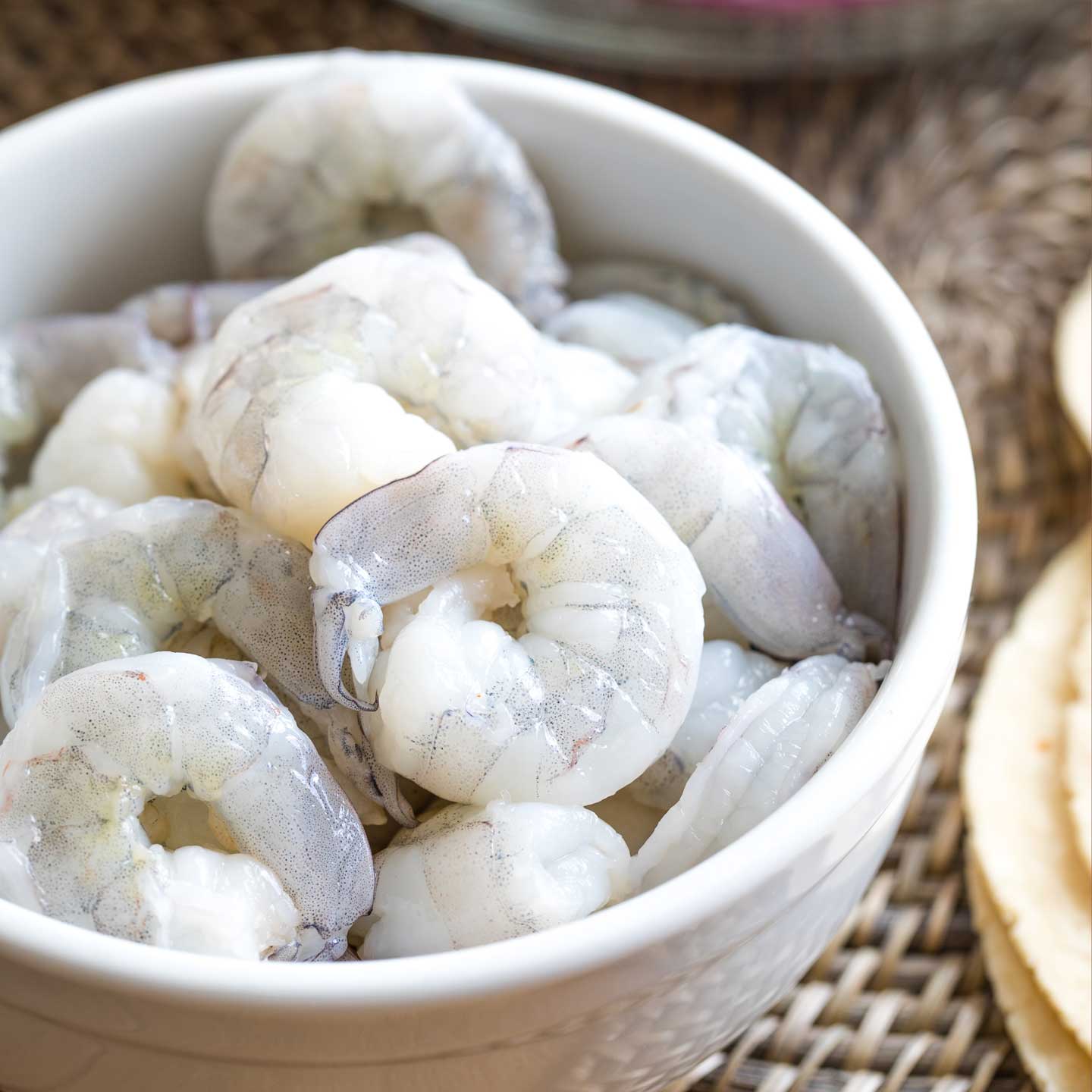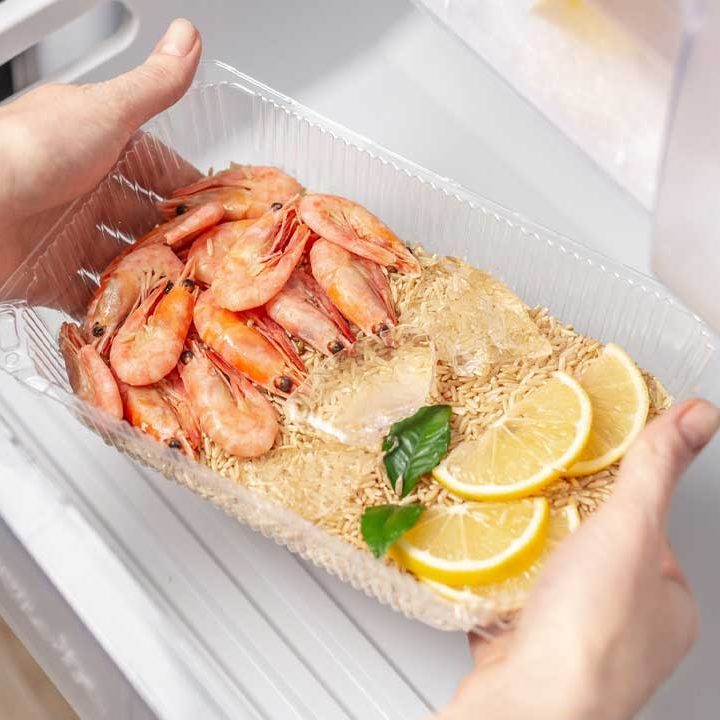Importance of Proper Shrimp Storage
Storing shrimp correctly is critical for any home chef or seafood lover. Proper storage extends shelf life and assures quality. It prevents the shrimp from becoming a health hazard. This ensures that each seafood meal is not only delicious but also safe.

Impact on Safety and Flavor
Proper storage significantly affects the safety and flavor of shrimp. Shrimp that is not stored correctly can spoil quickly. Spoiled shrimp may harbor bacteria, leading to foodborne illnesses. The flavor also deteriorates, leaving a bad taste and odor that ruins dishes.
Factors Affecting Shelf Life
Several factors influence how long shrimp stays fresh in the refrigerator:
- Temperature: Shrimp should be stored in the coldest part of your fridge. The ideal temperature is below 40°F.
- Exposure: Limit exposure to air to prevent bacteria growth.
- Moisture: Shrimp should be kept dry unless submerged in brine. Excess moisture can promote bacterial growth.
Adhering to these guidelines helps maximize the freshness and safety of your shrimp, enhancing your cooking results and health safety.
Shelf Life of Raw Shrimp
Understanding the shelf life of raw shrimp is crucial for maintaining its quality and safety. The timeframe for which raw shrimp remains safe to consume varies, depending on its storage conditions.
Guidelines from USDA
According to the USDA, you can refrigerate fresh, raw shrimp for up to two days. Beyond this period, the risk of bacterial growth increases significantly. It’s imperative to either cook or freeze the shrimp within this two-day window to ensure safety.
Signs of Spoilage in Raw Shrimp
Identifying spoiled raw shrimp is vital. Here are clear indicators:
- Smell: Fresh shrimp has a mild, sea-like aroma. Spoiled shrimp often emits a strong, unpleasant odor.
- Texture: Fresh shrimp should be firm. If it feels slimy or sticky, it’s likely bad.
- Color and Appearance: Any discoloration, such as black spots or fading, can signal spoilage.
- Slimy sheen: A slimy coating on the shrimp’s surface is a clear sign of bacterial presence.
These signs help you avoid consuming compromised shrimp, ensuring your meals are both delicious and safe.
Shelf Life of Cooked Shrimp
After enjoying a scrumptious seafood meal, you may wonder how long is shrimp good in the refrigerator, especially if it’s cooked. Cooked shrimp does have a slightly longer refrigerator life than raw.
How Long Can Cooked Shrimp Last?
Cooked shrimp can be safe in the fridge for 3 to 4 days. This assumes the refrigeration is prompt and storage is proper. Keep the shrimp at temperatures below 40°F to ensure safety. If any doubt arises about the timing, it’s best to err on the side of caution and consume it earlier or freeze for later use.
Tips to Identify Spoilage
Even with cooked shrimp, signs of spoilage are important to recognize. Trust your senses to judge the quality correctly:
- Smell: Spoiled shrimp has a sour or ammonia-like odor. It’s a clear sign to avoid consumption.
- Color: Look out for color loss or an unappealing gray hue.
- Texture: If the shrimp feels mushy, rather than firm, it’s past its prime.
- Visual cues: Any sign of mold or unusual slime should immediately disqualify the shrimp from eating.
By following these tips, you’ll keep your meals safe and delightful. Remember: when in doubt, throw it out.
 Best Practices for Storing Shrimp
Best Practices for Storing Shrimp
Proper storage of shrimp not only extends its freshness but also ensures safety and maintains flavor. Knowing the best practices for storing both raw and cooked shrimp can help prevent early spoilage and potential health hazards. Below, we explore crucial temperature considerations and preventive measures to enhance the longevity and freshness of shrimp.
Temperature Considerations
Shrimp require specific temperature handling to remain fresh. Always store shrimp in the coldest part of your refrigerator, typically the bottom shelf, where temperatures are lowest and most stable. Shrimp should be kept at or below 40°F. By maintaining this temperature, you minimize the risk of bacterial growth that can cause spoilage and foodborne illnesses.
Preventive Measures to Extend Freshness
To further preserve the quality of shrimp, adopt these preventive measures:
- Immediate Refrigeration: Place shrimp in the refrigerator as soon as you get home.
- Proper Packaging: Use airtight containers or sealable plastic bags to avoid exposure to air.
- Use Ice: Place raw shrimp on a bed of ice in a bowl within the fridge for additional cooling.
- Limit Handling: Handle shrimp as little as possible to reduce the introduction of bacteria from hands or utensils.
These practices will help keep shrimp safe and delicious, maximizing the enjoyment of your seafood meals.
Freezing Shrimp for Longevity
When you can’t cook fresh shrimp within two days, freezing is the best way to preserve it.
Benefits of Freezing Over Refrigerating
Freezing shrimp has several advantages:
- Extended Shelf Life: Freezing can keep shrimp safe for months, extending its usability beyond the fridge’s limit.
- Flavor Preservation: Freezes halt the growth of bacteria that cause spoilage, helping to maintain flavor.
- Convenience: Frozen shrimp can be thawed and used at your convenience, making meal planning flexible.
Proper freezing techniques are crucial to ensure that shrimp retain their quality and safety. Here’s how you do it:
How to Properly Freeze Shrimp
To freeze shrimp effectively, follow these tips:
- Clean Thoroughly: Wash the shrimp and remove their heads, shells, and veins.
- Dry Completely: Pat the shrimp dry to prevent ice crystals and freezer burn.
- Airtight Packaging: Use freezer bags or wrap the shrimp tightly with cling film or aluminum foil.
- Label and Date: Mark the package with the freezing date so you can track how long they’ve been stored.
- Even Spacing: Lay the shrimp out so they freeze individually, making them easier to separate later.
Using these strategies will help ensure that your shrimp stay as fresh as possible until you’re ready to enjoy them. Remember, how long shrimp is good in the refrigerator is much shorter than its frozen counterpart—freeze for longevity and better taste.
 Signs That Shrimp Has Gone Bad
Signs That Shrimp Has Gone Bad
Knowing when shrimp has spoiled is key to food safety. Spotting bad shrimp helps avoid health risks and ensures meals stay enjoyable. Here we’ll discuss how to identify when shrimp is no longer good to eat.
Visual Indicators of Spoiled Shrimp
Look closely at the shrimp’s appearance to spot signs of spoilage. Here’s what to check:
- Color Change: Fresh shrimp should have a bright, translucent look. If the shrimp turns dull or has black spots, it’s likely bad.
- Slimy Texture: A sticky or slimy surface is a sign that shrimp has gone bad. Fresh shrimp should be dry and firm to the touch.
- Surface Sheen: Bad shrimp often has a slimy sheen. This indicates bacterial growth.
Remember, when shrimp looks off, it’s safest to discard it.
Smell and Texture Clues
Your nose and hands are great tools for detecting bad shrimp. Pay attention to these factors:
- Odor: Throw out shrimp if it smells sour, ammonia-like, or generally off. Fresh shrimp smells like the sea.
- Feel: If shrimp feels mushy or slimy, do not eat it. Fresh shrimp is firm and springs back when pressed.
Rely on these smell and texture clues to make sure the shrimp in your refrigerator is safe to use.
Conclusion: How Long Is Shrimp Good in the Refrigerator?
In summary, shrimp is truly a delightful addition to any meal, but knowing how long it is good in the refrigerator is key to safety and quality. Fresh raw shrimp can last for 1 to 2 days, while cooked shrimp can last 3 to 4 days in the refrigerator. Always keep an eye out for signs of spoilage and ensure proper storage methods are employed. By doing so, you can enjoy delicious shrimp dishes without the worry of foodborne illness. Always prioritize buying fresh shrimp and prepare it with care to make the most of its delightful flavors and health benefits.
